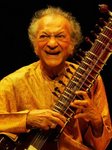The following case studies are typical examples of the use of Reiki
(names changed and identifying information kept to a minimum)
Case Study 1:
Danny is an 11 year old pony (Welsh Section A). He is in good health but becomes very excitable and difficult to handle when taken outside his normal routine.
The following (15 – 25 minute) treatments took place every Saturday for 3 weeks.
Much to the surprise of his owner Danny relaxed immediately when I placed my hands at the base of his neck: other than to try and remove annoying flies he remained motionless. Having held this position for 3 – 4 minutes I then placed one hand on the top of his head between his ears and the other on the neck just below the jaw: at this stage Danny’s eyes began to droop as though he was going to sleep and his head started to sag. The treatment continued with Reiki being applied to and around the main chakra points.
Second Session: For the second treatment I ignored my own advice of having the horse isolated in the yard or stable: Danny was grazing in the field in the company of another horse. Though accepting of the Reiki Danny did not settle, being too concerned about the possibility of the other horse walking behind him and getting too close. All positions covered during the first treatment were covered again but this time slightly quicker as Danny was clearly restless. The owner reported that she felt there had been a slight improvement in his behaviour since the first session.
Third Session: Danny’s owner reported that Danny had been much calmer since my last visit, almost to the point of being “totally chilled and laid back”: This despite the shortened second session.
For the third treatment we returned Danny to the stable yard and although there was another pony in close proximity Danny relaxed immediately and enjoyed a longer session of Reiki. Now being used to both myself and the process Danny remained receptive to the energy for 25 minutes displaying all the symptoms of relaxation i.e. sagging head with half-closed eyes, gurgling stomach and one of his hind legs slightly bent with hoof resting gently on the ground.
Conclusion: Danny’s behaviour and excitability have certainly improved over the past few weeks: he is a much calmer animal. Whether or not his continues remains to be seen but just like humans I feel that he would benefit from regular top-up treatments, probably every 4 – 6 weeks.
Case Study 2:
Rumbold is a male horse, 7 years old. With a previous owner he has suffered from neglect and near starvation. He likes company but can be very difficult and nervous when asked to go out for rides without another horse. He is sensitive to an old jumping injury on one of rear legs.
The first treatment took place in the stable yard with the owner holding Rumbold on a short lead. Though apprehensive at first, Rumbold allowed me to commence the treatment at the base of the neck without him moving away. After a few minutes in this position Rumbold relaxed enough to allow me to treat his head area. Once around here Rumbold’s neck began to droop and his eyelids close. I then proceeded to work along his back and around his stomach. This first treatment lasted about 30 minutes. Despite finding the energy relaxing Rumbold became agitated by a rather noisy cow in the next field.
Prior to the second treatment, one week later, the own reported that Rumbold had been a lot calmer and easier to handle.
The second treatment followed much the same pattern as the first but without the noisy cow in attendance. Consequently the session lasted longer with Rumbold only showing agitation when I tried to treat his old leg injury. To combat this I lifted my hands and treated the area from 1 – 2 inches away. Overall a greater degree of relaxation was noticed with Rumbold fighting valiantly not to fall asleep completely.
Session time 45 – 50 minutes.
Since the second session the owner has reported that Rumbold is a changed animal. He has been happy to go out on his own; he is calmer and even easier to handle than after the first session. Just as with Danny, above I have advised the owner to call me if any of his old symptoms show signs of returning.
N.B. Reiki does not seek to replace the advice of your Veterinary practitioner. If you suspect the animal under your care has any medical problem whatsoever you should first consult with your vet for a thorough medical diagnosis. You should neither stop nor alter the dosage of any medically prescribed drugs without the knowledge of your vet. Though Reiki is non-manipulative or invasive it is advisable to check that your vet has no objection to the application of hands-on-healing.
Subscribe to:
Post Comments (Atom)







No comments:
Post a Comment